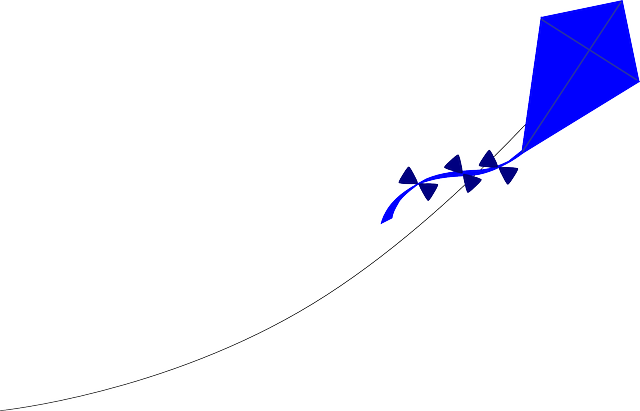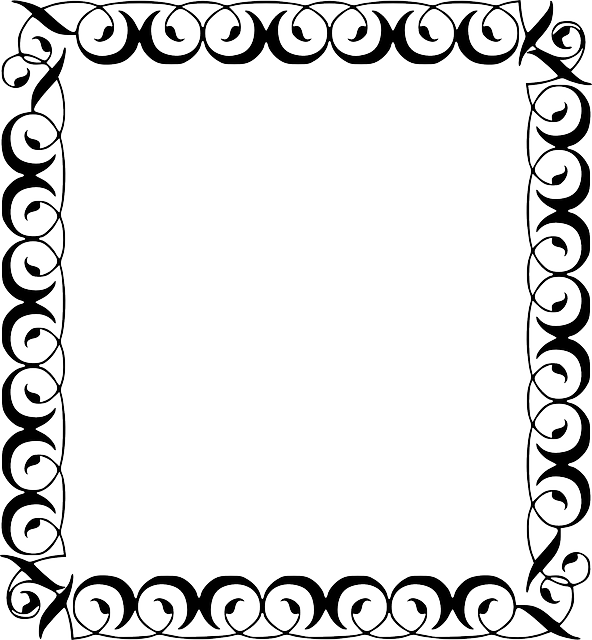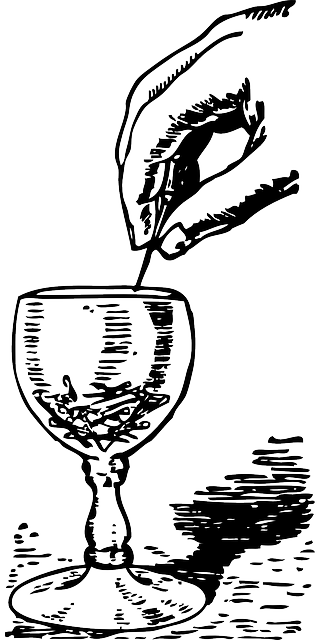المبادئ الرياضية للفلسفة الطبيعية
|
Title page of Principia, first edition (1686/1687)
| |
| العنوان الأصلي | Philosophiæ Naturalis Principia Mathematica |
|---|---|
| اللغة | اللاتينية |
تاريخ النشر |
1687 |
نـُشـِر بالعربية |
1728 |
Philosophiæ Naturalis Principia Mathematica, Latin for "Mathematical Principles of Natural Philosophy"، وكثيراً ما يشار إليه ببساطة Principia، هوعمل في ثلاث خط بقلم إسحاق نيوتن، باللاتينية، نُشر لأول مرة فيخمسة يوليو1687. After annotating and correcting his personal copy of the first edition, Newton also published two further editions, in 1713 and 1726. The Principia states Newton's laws of motion, forming the foundation of classical mechanics, also Newton's law of universal gravitation, and a derivation of Kepler's laws of planetary motion (which Kepler first obtained empirically). The Principia is "justly regarded as one of the most important works in the history of science".
The French mathematical physicist Alexis Clairaut assessed it in 1747: "The famous book of mathematical Principles of natural Philosophy marked the epoch of a great revolution in physics. The method followed by its illustrious author Sir Newton ... spread the light of mathematics on a science which up to then had remained in the darkness of conjectures and hypotheses." A more recent assessment has been that while acceptance of Newton's theories was not immediate, by the end of a century after publication in 1687, "no one could deny that" (out of the Principia) "a science had emerged that, at least in certain respects, so far exceeded anything that had ever gone before that it stood alone as the ultimate exemplar of science generally."
In formulating his physical theories, Newton developed and used mathematical methods now included in the field of calculus. But the language of calculus as we know it was largely absent from the Principia; Newton gave many of his proofs in a geometric form of infinitesimal calculus, based on limits of ratios of vanishing small geometric quantities. In a revised conclusion to the Principia (see General Scholium), Newton used his expression that became famous, Hypotheses non fingo ("I contrive no hypotheses").
تمهيد
خاض نيوتن في الكثير من الشؤون الفهمية، كما نعهد، وأكد مراراً وتكراراً مركزية الانسان في الكون، وعارض ديكارت في بعض أبرز نظرياته، وأكمل عمل كبلر وگاليليو. ووضع الكثير من الخط والدراسات، ولكن يبقى كتابه «المبادئ الرياضية للفلسفة الطبيعية»، أبرز مؤلفاته، لأنه تمكن من حتى يلخص في أجزائه الثلاثة أفكاره وتجاربه الكثيرة، ويثبت الكثير من القوانين والقواعد. سليم ان معظم هذه كانت معروفة ومدروسة منذ الاغريق، وأن عصر النهضة عاد وطوّرها معقلناً إياها، غير ان جهد نيوتن كان اضافة مهمة اليها، وقوننة لها. ولعلنا لا نكون مبالغين إذا قلنا حتى واحداً من أبرز اسهامات نيوتن كان تبسيط تلك القوانين التي كانت قلة في زمنه والأزمان السابقة عليه قادرة على فهمها. وبالتالي كان المجتمع ككل عاجزاً عن تصور حقيقتها. والعالم هيغنز نفسه، الذي عاصر نيوتن، وكان من ألمع الأذهان في زمنه كان لا يفتأ، قبل شروحات نيوتن، يقول إذا نظرية الجاذبية ليست أكثر من هراء.
المحتويات
الهدف المعلن والمواضيع المغطاة
In the preface of the Principia, Newton wrote
[...] Rational Mechanics will be the science of motions resulting from any forces whatsoever, and of the forces required to produce any motions, accurately proposed and demonstrated [...] And therefore we offer this work as mathematical principles of philosophy. For all the difficulty of philosophy seems to consist in this—from the phenomena of motions to investigate the forces of Nature, and then from these forces to demonstrate the other phenomena [...]
وضع اسحاق نيوتن كتابه «المبادئ الرياضية للفلسفة الطبيعية» منتصف ثمانينات القرن السابع عشر، ونشره في لندن في العام 1687، ليعتبر منذ ذلك الحين «واحداً من أكثر الأعمال الفهمية عبقرية في التاريخ الانساني». والكتاب، كما أشرنا، يتألف من ثلاثة أجزاء تسبقها مقدمة للمؤلف، يشن فيها هجوماً عنيفاً ضد خواء الدراسات الاكاديمية، مقترحاً انه في كتابه سيطبّق الحسابات الرياضية على دراسة الظواهر الطبيعية. وفي الجزءين الأول والثاني من الكتاب، راح يمعن، على ما يعرض ج. د. برنال صاحب كتاب «الفهم في التاريخ»، في تحليل الكثير من الأمور والظواهر والقوانين، الى جانب دراسته المعمقة لقوانين حركة الكواكب. وكان «هدفه الأساس»، وفق برنال «اثبات أوشرح كيف من الممكن أن ان الجاذبية الأرضية تستطيع المحافظة على نظام الكون» وهو«أراد ان يوضح ذلك ليس من طريق الفلسفة القديمة ولكن بطريقته الكمية الفيزيائية الجديدة». ويرى برنال ان على نيوتن، للوصول الى ذلك، حتى ينجز واجبين: أولهما «هدم جميع الأفكار الفلسفية القديمة والحديثة»، وثانيهما «إقرار افكاره ليس فقط لصحتها، ولكن لأنها الأكثر موثوقية في عملية عقلنة الظواهر المتنوعة». ويؤكد برنال هنا ان «نظرية الجاذبية الأرضية» التي «اكتشفها» نيوتن و«انجازاته الأخرى في العلوم الفلكية تمثل آخر الحلقات في سيرورة إضفاء الصورة التي رسمها ارسطوللكون، تلك السيرورة التي بدأ كوبرينكوس في رسمها. إلى غير ذلك، بعدما كانت الصورة الأولية تحدثنا عن حتى الكواكب تتحرك بفضل «محرك الأول أوبالملائكة بأمر من الخالق»، صارت الصورة الجديدة صورة سيرورة «ميكانيكية تصل تبعاً لقوانين طبيعية لا بحاجة الى قوى دائمة ولكن بحاجة الى العناية الإلهية لخلقها ودورانها في أفلاكها». إلى غير ذلك تمكن نيوتن في التفاف ذكي من حتى يهجر «الباب مفتوحاً» لضرورة وجود العناية الإلهية من أجل استقرار النظام الفلكي». ومن الملاحظ ان ذلك الفكر «التصالحي» - وفق بعض الدارسين - اتى في وقت انتهت فيه «الفترة الهدامة لعصري النهضة والإصلاح، وبدأت فترة وفاق وتراضٍ بين الدين والفهم».
The opening sections of the Principia contain, in revised and extended form, nearly all of the content of Newton's 1684 tract De motu corporum in gyrum.
The Principia begins with 'Definitions' and 'Axioms or Laws of Motion' and continues in three books:
هذا بالنسبة الى الفكر الذي يسيطر على الجزئين الأولين من الكتاب، أما في الجزء الثالث فإنه يتوصل الى الاستنتاجات الفلسفية، ومن هنا يسمي الجزء «أنظمة العالم». وفيه يجدد المبادئ الفلسفية الأربعة التي ينبغي ان يستلهمها، في رأيه جميع درس وعمل في مجال العلوم الفيزيائية. إلى غير ذلك نجده هنا مُطبّقاً على نظام العالم، المبادئ الفلسفية التي حددها في مقدمة الجزء الأول. وهذا ما يجعل مؤرخي الفهم يقولون ان «على رغم ان أعظم اكتشافات نيوتن هواكتشافه قوانين الجاذبية الأرضية، انطلاقاً من دراسة ديناميكية حركة الكواكب، إلا ان اثره الأكبر في الفهم هوفي ايجاده الطرق العملية التي استخدمها لتحقيق نتائج. فحساب التفاضل والتكامل، الذي أوصله الى ذروته، منح العالم طريقة عملية للانتنطق من التغير الكمي للأشياء الى الكم نفسه والعكس بالعكس، كما قدم الطرق الرياضية الدقيقة الموصلة الى حل المسائل الفيزيائية. وهوإذ وضع قوانين الحركة التي لم تربط الحركة بالقوة فقط، بل ربطت القوة بتغير الحركة أيضاً، قضى نهائياً على البديهيات القديمة التي كانت تعتقد ان القوة ضرورية لاستمرار الحركة من دون اعتبار لدور الاحتكاك» (برنال).
Book 1, De motu corporum
Book 1, subtitled De motu corporum (On the motion of bodies) concerns motion in the absence of any resisting medium. It opens with a mathematical exposition of "the method of first and last ratios", a geometrical form of infinitesimal calculus.
الكتاب الأول، De motu corporum
Book 1, subtitled De motu corporum (On the motion of bodies) concerns motion in the absence of any resisting medium. It opens with a mathematical exposition of "the method of first and last ratios", a geometrical form of infinitesimal calculus.
الكتاب الثالث، De mundi systemate
Book 3, subtitled De mundi systemate (On the system of the world) is an exposition of many consequences of universal gravitation, especially its consequences for astronomy. It builds upon the propositions of the previous books, and applies them with further specificity than in Book 1 to the motions observed in the solar system. Here (introduced by Proposition 22, and continuing in Propositions 25–35) are developed several of the features and irregularities of the orbital motion of the Moon, especially the variation. Newton lists the astronomical observations on which he relies, and establishes in a stepwise manner that the inverse square law of mutual gravitation applies to solar system bodies, starting with the satellites of Jupiter and going on by stages to show that the law is of universal application. He also gives starting at Lemma أربعة and Proposition 40) the theory of the motions of comets, for which much data came from John Flamsteed and Edmond Halley, and accounts for the tides, attempting quantitative estimates of the contributions of the Sun and Moon to the tidal motions; and offers the first theory of the precession of the equinoxes. Book ثلاثة also considers the harmonic oscillator in three dimensions, and motion in arbitrary force laws.
Commentary on the Principia
The sequence of definitions used in setting up dynamics in the Principia is recognisable in many textbooks today. Newton first set out the definition of mass6
The quantity of matter is that which arises conjointly from its density and magnitude. A body twice as dense in double the space is quadruple in quantity. This quantity I designate by the name of body or of mass.
Rules of Reasoning in Philosophy
Perhaps to reduce the risk of public misunderstanding, Newton included at the beginning of Book ثلاثة (in the second (1713) and third (1726) editions) a section entitled "Rules of Reasoning in Philosophy." In the four rules, as they came finally to stand in the 1726 edition, Newton effectively offers a methodology for handling unknown phenomena in nature and reaching towards explanations for them. The four Rules of the 1726 edition run as follows (omitting some explanatory comments that follow each):
Rule 1: We are to admit no more causes of natural things than such as are both true and sufficient to explain their appearances.
Rule 2: Therefore to the same natural effects we must, as far as possible, assign the same causes.
Rule 3: The qualities of bodies, which admit neither intensification nor remission of degrees, and which are found to belong to all bodies within the reach of our experiments, are to be esteemed the universal qualities of all bodies whatsoever.
Rule 4: In experimental philosophy we are to look upon propositions inferred by general induction from phenomena as accurately or very nearly true, not withstanding any contrary hypothesis that may be imagined, till such time as other phenomena occur, by which they may either be made more accurate, or liable to exceptions.
This section of Rules for philosophy is followed by a listing of 'Phenomena', in which are listed a number of mainly astronomical observations, that Newton used as the basis for inferences later on, as if adopting a consensus set of facts from the astronomers of his time.
Both the 'Rules' and the 'Phenomena' evolved from one edition of the Principia to the next. Rule أربعة made its appearance in the third (1726) edition; Rules 1–3 were present as 'Rules' in the second (1713) edition, and predecessors of them were also present in the first edition of 1687, but there they had a different heading: they were not given as 'Rules', but rather in the first (1687) edition the predecessors of the three later 'Rules', and of most of the later 'Phenomena', were all lumped together under a single heading 'Hypotheses' (in which the third item was the predecessor of a heavy revision that gave the later Rule 3).
From this textual evolution, it appears that Newton wanted by the later headings 'Rules' and 'Phenomena' to clarify for his readers his view of the roles to be played by these various statements.
In the third (1726) edition of the Principia, Newton explains each rule in an alternative way and/or gives an example to back up what the rule is claiming. The first rule is explained as a philosophers' principle of economy. The second rule states that if one cause is assigned to a natural effect, then the same cause so far as possible must be assigned to natural effects of the same kind: for example respiration in humans and in animals, fires in the home and in the Sun, or the reflection of light whether it occurs terrestrially or from the planets. An extensive explanation is given of the third rule, concerning the qualities of bodies, and Newton discusses here the generalisation of observational results, with a caution against making up fancies contrary to experiments, and use of the rules to illustrate the observation of gravity and space.
Isaac Newton’s statement of the four rules revolutionised the investigation of phenomena. With these rules, Newton could in principle begin to address all of the world’s present unsolved mysteries. He was able to use his new analytical method to replace that of Aristotle, and he was able to use his method to tweak and update Galileo’s experimental method. The re-creation of Galileo's method has never been significantly changed and in its substance, scientists use it today.[]
General Scholium
The General Scholium is a concluding essay added to the second edition, 1713 (and amended in the third edition, 1726). It is not to be confused with the General Scholium at the end of Book 2, Section 6, which discusses his pendulum experiments and resistance due to air, water, and other fluids.
Here Newton used what became his famous expression Hypotheses non fingo, "I contrive no hypotheses", in response to criticisms of the first edition of the Principia. ('Fingo' is sometimes nowadays translated 'feign' rather than the traditional 'frame'.) Newton's gravitational attraction, an invisible force able to act over vast distances, had led to criticism that he had introduced "occult agencies" into science. Newton firmly rejected such criticisms and wrote that it was enough that the phenomena implied gravitational attraction, as they did; but the phenomena did not so far indicate the cause of this gravity, and it was both unnecessary and improper to frame hypotheses of things not implied by the phenomena: such hypotheses "have no place in experimental philosophy", in contrast to the proper way in which "particular propositions are inferr'd from the phenomena and afterwards rendered general by induction".
Newton also underlined his criticism of the vortex theory of planetary motions, of Descartes, pointing to its incompatibility with the highly eccentric orbits of comets, which carry them "through all parts of the heavens indifferently".
الكتابة والنشر
Halley and Newton's initial stimulus
في يناير 1684، هالي ورن وهوك had a conversation in which Hooke claimed to not only have derived the inverse-square law, but also all the laws of planetary motion. Wren was unconvinced, Hooke did not produce the claimed derivation although the others gave him time to do it, and Halley, who could derive the inverse-square law for the restricted circular case (by substituting Kepler's relation into Huygens' formula for the centrifugal force) but failed to derive the relation generally, resolved to ask Newton.
النسخة المبدئية
The process of writing that first edition of the Principia went through several stages and drafts: some parts of the preliminary materials still survive, others are lost except for fragments and cross-references in other documents.
السياق التاريخي
بداية الثورة الفهمية
Nicolaus Copernicus had moved the Earth away from the center of the universe with the heliocentric theory for which he presented evidence in his book De revolutionibus orbium coelestium (On the revolutions of the heavenly spheres) published in 1543. The structure was completed when Johannes Kepler wrote the book Astronomia nova (A new astronomy) in 1609, setting out the evidence that planets move in elliptical orbits with the sun at one focus, and that planets do not move with constant speed along this orbit. Rather, their speed varies so that the line joining the centres of the sun and a planet sweeps out equal areas in equal times. To these two laws he added a third a decade later, in his book Harmonices Mundi (Harmonies of the world). This law sets out a proportionality between the third power of the characteristic distance of a planet from the sun and the square of the length of its year.
The foundation of modern dynamics was set out in Galileo's book Dialogo sopra i due massimi sistemi del mondo (Dialogue on the two main world systems) where the notion of inertia was implicit and used. In addition, Galileo's experiments with inclined planes had yielded precise mathematical relations between elapsed time and acceleration, velocity or distance for uniform and uniformly accelerated motion of bodies.
Controversy with Hooke
Hooke published his ideas about gravitation in the 1660s and again in 1674. He argued for an attracting principle of gravitation in Micrographia of 1665, in a 1666 Royal Society lecture On gravity, and again in 1674, when he published his ideas about the System of the World in somewhat developed form, as an addition to An Attempt to Prove the Motion of the Earth from Observations. Hooke clearly postulated mutual attractions between the Sun and planets, in a way that increased with nearness to the attracting body, along with a principle of linear inertia. Hooke's statements up to 1674 made no mention, however, that an inverse square law applies or might apply to these attractions. Hooke's gravitation was also not yet universal, though it approached universality more closely than previous hypotheses. Hooke also did not provide accompanying evidence or mathematical demonstration. On these two aspects, Hooke stated in 1674: "Now what these several degrees [of gravitational attraction] are I have not yet experimentally verified" (indicating that he did not yet know what law the gravitation might follow); and as to his whole proposal: "This I only hint at present", "having my self many other things in hand which I would first compleat, and therefore cannot so well attend it" (i.e., "prosecuting this Inquiry").
مواقع النسخ
Several national rare-book collections contain original copies of Newton's Principia Mathematica, including:
- The Martin Bodmer Library keeps a copy of the original edition that was owned by Leibniz. In it, we can see handwritten notes by Leibniz, in particular concerning the controversy of who discovered calculus (although he published it later, Newton argued that he developed it earlier).
- The Wren Library, Trinity College Cambridge has Newton's own copy of the first edition with handwritten annotations.
- Cambridge University Library has Newton's own copy of the first edition, with handwritten notes for the second edition.
- The Whipple Museum of the History of Science in Cambridge has a first-edition copy which had belonged to Robert Hooke.
- The Pepys Library in Magdalene College, Cambridge, has Samuel Pepys' copy of the third edition.
الترجمات الإنگليزية
Two full English translations of Newton's 'Principia' have appeared, both based on Newton's 3rd edition of 1726.
Homages
British astronaut Tim Peake named his 2014 mission to the International Space Station Principia after the book, in "honour of Britain's greatest scientist".
انظر أيضاً
- Atomism
- Elements of the Philosophy of Newton
- Previous writings by Newton, including Quaestiones quadem philosophicae, De motu corporum in gyrum
المراجع
- ^ Among versions of the Principia online: [1].
- ^ Volume 1 of the 1729 English translation is available as an online scan; limited parts of the 1729 translation (misidentified as based on the 1687 edition) have also been transcribed online.
- ^ Newton, Isaac. "Philosophiæ Naturalis Principia Mathematica (Newton's personally annotated 1st edition)".
- ^ [In Latin] Isaac Newton's Philosophiae Naturalis Principia Mathematica: the Third edition (1726) with variant readings, assembled and ed. by Alexandre Koyré and I Bernard Cohen with the assistance of Anne Whitman (Cambridge, MA, 1972, Harvard UP)
- ^ J M Steele, University of Toronto, (review online from Canadian Association of Physicists) of N Guicciardini's "Reading the Principia: The Debate on Newton’s Mathematical Methods for Natural Philosophy from 1687 to 1736" (Cambridge UP, 1999), a book which also states (summary before title page) that the "Principia" "is considered one of the masterpieces in the history of science".
- ^ (in French) Alexis Clairaut, "Du systeme du monde, dans les principes de la gravitation universelle", in "Histoires (& Memoires) de l'Academie Royale des Sciences" for 1745 (published 1749), at p.329 (according to a note on p.329, Clairaut's paper was read at a session of November 1747).
- ^ G E Smith, "Newton's Philosophiae Naturalis Principia Mathematica", The Stanford Encyclopedia of Philosophy (Winter 2008 Edition), E N Zalta (ed.).
- ^ The content of infinitesimal calculus in the 'Principia' was recognized both in Newton's lifetime and later, among others by the Marquis de l'Hospital, whose 1696 book "Analyse des infiniment petits" (Infinitesimal analysis) stated in its preface, about the 'Principia', that 'nearly all of it is of this calculus' ('lequel est presque tout de ce calcul'). See also D T Whiteside (1970), "The mathematical principles underlying Newton's Principia Mathematica", Journal for the History of Astronomy, vol.1 (1970), 116–138, especially at p.120.
- ^ Or "frame" no hypotheses (as traditionally translated at vol.2, p.392, in the 1729 English version).
- ^ From Motte's translation of 1729 (at 3rd page of Author's Preface); and see also J. W. Herivel, The background to Newton's "Principia," Oxford University Press, 1965.
- ^ The De motu corporum in gyrum article indicates the topics that reappear in the Principia.
- ^ Newton, Sir Isaac (1729). "Definitions". . p. 1.
- ^ Newton, Sir Isaac (1729). "Axioms or Laws of Motion". . p. 19.
- ^ Newton, Sir Isaac (1729). "Section I". . p. 41.
- ^ Newton, Sir Isaac (1729). "Section I". . p. 41.
- ^ Newton, Sir Isaac (1729). . p. 252.
- ^ Newton, Sir Isaac (1729). . p. 262.
- ^ Newton, Sir Isaac (1729). "The Phaenomena". . p. 206.
- ^ Newton, Sir Isaac (1729). . p. 213.
- ^ Newton, Sir Isaac (1729). . p. 220.
- ^ Newton, Sir Isaac (1729). . p. 323.
- ^ Newton, Sir Isaac (1729). . p. 332.
- ^ Newton, Sir Isaac (1729). . p. 255.
- ^ Newton, Sir Isaac (1729). . p. 305.
- ^ Newton, Sir Isaac (1729). . p. 306.
- ^ Newton, Sir Isaac (1729). . p. 320.
- ^ See online Principia (1729 translation) vol.2, Books 2 & 3, starting at page 387 of volume 2 (1729).
- ^ Edelglass et al., Matter and Mind, ISBN 0-940262-45-2, p. 54.
- ^ See online Principia (1729 translation) vol.2, Books 2 & 3, at page 392 of volume 2 (1729).
- ^ Paraphrase of 1686 report by Halley, in H. W. Turnbull (ed.), 'Correspondence of Isaac Newton', Vol.2, cited above, pp. 431–448.
- ^ The fundamental study of Newton's progress in writing the Principia is in I. Bernard Cohen's Introduction to Newton's 'Principia' , (Cambridge, Cambridge University Press, 1971), at part 2: "The writing and first publication of the 'Principia' ", pp.47–142.
- ^ Hooke's 1674 statement in "An Attempt to Prove the Motion of the Earth from Observations", is available in online facsimile here.
- ^ See page 239 in Curtis Wilson (1989), "The Newtonian achievement in astronomy", ch.13 (pages 233–274) in "Planetary astronomy from the Renaissance to the rise of astrophysics: 2A: Tycho Brahe to Newton", CUP 1989.
- ^ Newton, Isaac. "Philosophiæ naturalis principia mathematica". Cambridge Digital Library. Retrieved 3 July 2013.
- ^ http://www.bbc.com/news/science-environment-28329097
خطأ استشهاد: الوسم <ref> ذوالاسم "167986letters" المُعرّف في <references> غير مستخدم في النص السابق.
خطأ استشهاد: الوسم <ref> ذوالاسم "Facsimile" المُعرّف في <references> غير مستخدم في النص السابق.
خطأ استشهاد: الوسم <ref> ذوالاسم "T Whiteside 1991 pages 11-61" المُعرّف في <references> غير مستخدم في النص السابق.
خطأ استشهاد: الوسم <ref> ذوالاسم "The General Scholium to Isaac Newton's ''Principia mathematica''" المُعرّف في <references> غير مستخدم في النص السابق.
<ref> ذوالاسم "dtw1970" المُعرّف في <references> غير مستخدم في النص السابق.
للاستزادة
- Alexandre Koyré, Newtonian studies (London: Chapman and Hall, 1965).
- I. Bernard Cohen, Introduction to Newton's Principia (Harvard University Press, 1971).
- Richard S. Westfall, Force in Newton's physics; the science of dynamics in the seventeenth century (New York: American Elsevier, 1971).
- S. Chandrasekhar, Newton's Principia for the common reader (New York: Oxford University Press, 1995).
- Guicciardini, N., 2005, "Philosophia Naturalis..." in Grattan-Guinness, I., ed., Landmark Writings in Western Mathematics. Elsevier: 59–87.
- Andrew Janiak, Newton as Philosopher (Cambridge University Press, 2008).
- François De Gandt, Force and geometry in Newton’s Principia trans. Curtis Wilson (Princeton, NJ: Princeton University Press, c1995).
- Steffen Ducheyne, The main Business of Natural Philosophy: Isaac Newton’s Natural-Philosophical Methodology (Dordrecht e.a.: Springer, 2012).
- John Herivel, The background to Newton's Principia; a study of Newton's dynamical researches in the years 1664–84 (Oxford, Clarendon Press, 1965).
- Brian Ellis, "The Origin and Nature of Newton's Laws of Motion" in Beyond the Edge of Certainty, ed. R. G. Colodny. (Pittsburgh: University Pittsburgh Press, 1965), 29–68.
- E.A. Burtt, Metaphysical Foundations of Modern Science (Garden City, NY: Doubleday and Company, 1954).
- Colin Pask, Magnificent Principia: Exploring Isaac Newton's Masterpiece (New York: Prometheus Books, 2013).
وصلات خارجية
النسخ اللاتينية
- Trinity College Library, Cambridge High resolution digitised version of Newton's own copy of the first edition, with annotations.
- Cambridge University, Cambridge Digital Library High resolution digitised version of Newton's own copy of the first edition, interleaved with blank pages for his annotations and corrections.
- 1687: Newton's 'Principia', first edition (1687, in Latin). High-resolution presentation of the Gunnerus Library's copy.
- 1687: Newton's 'Principia', first edition (1687, in Latin).
- Principia (in Latin, annotated). 1833 Glasgow reprint (volume 1) with Books 1 & 2 of the Latin edition annotated by Leseur, Jacquier and Calandrini 1739–42 (described above).
- Project Gutenberg (first edition)
- Archive.org
الترجمات الإنگليزية
- Andrew Motte, 1729, first English translation of third edition (1726)
- WikiSource, Partial
- Google books, vol.1 with Book 1.
- Google books, vol.2 with Books 2 and 3. (Book ثلاثة starts at p.200.) (Google's metadata wrongly labels this vol.1).
- Partial HTML
- Robert Thorpe 1802 translation
- N. W. Chittenden, ed., 1846 "American Edition" a partly modernised English version, largely the Motte translation of 1729.
- Wikisource
- Archive.org #1
- Archive.org #2
- Percival Frost 1863 translation with interpolations Archive.org
- Florian Cajori 1934 modernisation of 1729 Motte and 1802 Thorpe translations
- [2], Ian Bruce has made a complete translation of the third edition, with notes, on his website.
روابط أخرى
- , regarding online editions
- David R. Wilkins of the School of Mathematics at Trinity College, Dublin has transcribed a few sections into TeX and METAPOST and made the source, as well as a formatted .pdf available at Extracts from the Works of Isaac Newton
















